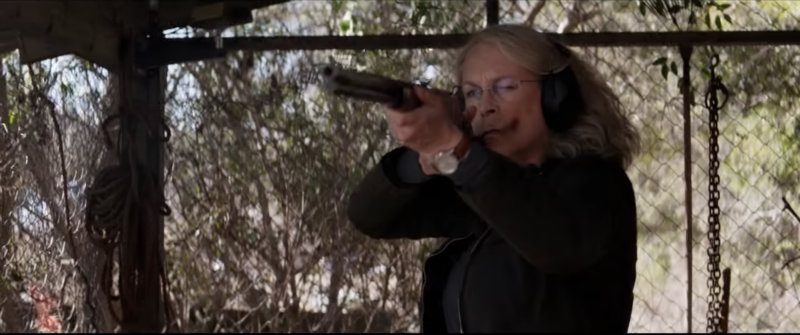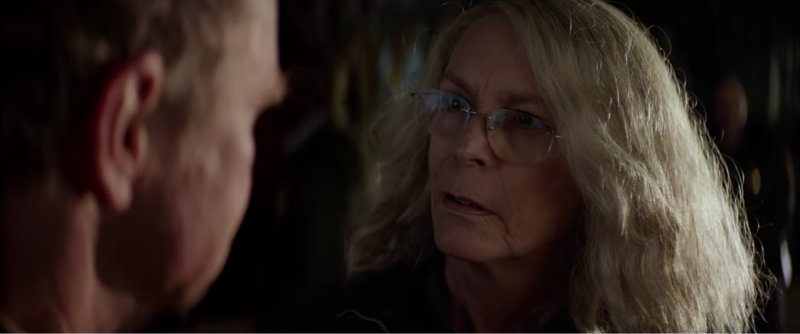SUMMARY
This is AI generated summarization, which may have errors. For context, always refer to the full article.

“There are no new insights or discoveries,” nonchalantly proclaims Laurie Strode (Jamie Lee Curtis) to two journalists who are working on a piece about Michael Myers. Laurie, the once-blooming teenager who survives the onslaught of knife-wielding Michael Myers, is now a reclusive old woman who spooks her daughter and her daughter’s family with her paranoia about Myers.
Myers, on the other hand, is locked up in a mental facility where he has a doctor patiently waiting for his favorite patient to utter a word. He eventually escapes, proving that Laurie’s paranoia is well-founded.
A different animal
The two journalists got exactly what they need to know from Laurie.
There really are no new insights or discoveries. Michael Myers, at least the one presented here in David Gordon Green’s sequel, is just a personification of evil, a force of skewed nature out on a mission to kill without a shred of human compassion. Green also fashions his sequel with the same philosophy. There is simply no need to burden the plot of John Carpenter’s legendary slasher flick with new knowledge on Myers. There is no point to reinventing the wheel when the formula works tremendously well.

As a result, Green’s Halloween is a prime example of a sequel of a canonical horror film done right. The film is peppered with homages to the original, with the clothesline where blankets seemingly hiding a masked murderer still evoking the same suspense as they did decades ago. Clearly, there is no intent to revise, no goal to correct whatever incorrectness there is in the past installment. Green only strives to match Carpenter’s consistently tense and taut thrills, without necessarily replicating all of Carpenter’s techniques.
Green’s Halloween is still very much a different animal, with sequences that astound in the way they are able to evoke terror simply by an ingenious switch in perspective or a framing that provokes the imagination.
He has freedom to astound without transgressing the strict rules of horror. In one sequence, he has his camera follow Myers quietly murder his way through trick-or-treating suburbia, the camera serving in different points as points of view of the infamous villain, allowing the audience to discomfortingly inhabit the same space as a murderer.
The story continued
Green simply wants to see the story continued, with its characters past their prime, still obsessing over events that happened decades ago.
This is the point where Green’s Halloween does offer a somewhat new insight. In fact, while the film stays true to formula, the fact that it does so keeping in mind that the characters of the franchise have lived most of their lives grants the film a flavor of relevance.
In one scene, Laurie, clearly perturbed by seeing Myers again when the murderer is being transferred to his new facility, goes to her granddaughter’s celebration dinner and begins to drink a glass of wine while rambling about her trauma. The sequence is followed by a strangely touching scene where the granddaughter follows Laurie to console her.
From there, the franchise gains new perspective, morphing from simply being a display of gratuitous violence which is to be expected from a Halloween movie into an exploration of trauma of strong women who have experienced some abuse. The fortitude and grit displayed by Laurie in her eventual confrontation with the literal representation of her demons is given further heft, turning the entire climactic sequence into a celebration of strong women rising from the ashes.
Defers to what works
Green’s Halloween is everything one would expect from a respectful sequel of Carpenter’s classic.
It cleverly defers to what works but also knows that it cannot just be a stubborn repetition. – Rappler.com

Francis Joseph Cruz litigates for a living and writes about cinema for fun. The first Filipino movie he saw in the theaters was Carlo J. Caparas’ Tirad Pass.
Since then, he’s been on a mission to find better memories with Philippine cinema.
Add a comment
How does this make you feel?





There are no comments yet. Add your comment to start the conversation.